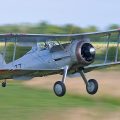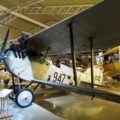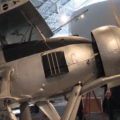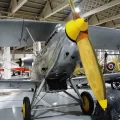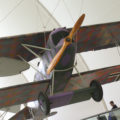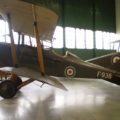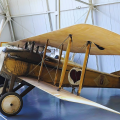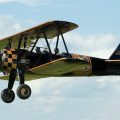
Focke-Wulf Fw 44 | |
|---|---|
| Riik | Saksamaa |
| Rolli | Biplane treener |
| Tootjad | Focke-Wulf FMA |
| Esimene lend | 1932 |
2007 Focke-Wulf Fw 44 on 1930. aastate Saksa kahekohaline biplaan, tuntud kui Stieglitz ("Goldfinch"). Kurt Tanki varajane disain, selle tootis Focke-Wulfi ettevõte pilootide koolitus- ja spordilennukitena. Lõpuks ehitati see litsentsi alusel ka mitmes teises riigis.
Allikas: Focke-Wulf Fw 44 Vikipeedias
| Focke-Wulf Fw 44 Stieglitz Walk Around | |
|---|---|
| Fotograaf | Unknow |
| Lokaliseerimine | Teadmata |
| Fotod | 20 |
Seotud komplektid:
Leia komplektid eBayst:
The Focke-Wulf Fw 44 is a biplane trainer aircraft that was developed in Germany in the 1930s. It was designed by Kurt Tank, who later became famous for his role in developing the Fw 190 fighter. The Fw 44 was one of the most successful and widely used trainer aircraft in the world, serving in many countries and in various roles. It had a robust and agile design, with a fabric-covered steel tube fuselage and wooden wings. It was powered by a radial engine that gave it a maximum speed of 185 km/h and a range of 550 km. The Fw 44 could accommodate two crew members, a student and an instructor, in open cockpits. It was equipped with basic instruments and a radio, and could also carry a machine gun or a camera for training purposes.
The Fw 44 first flew in 1932 and entered service with the Luftwaffe in 1934. It was also exported to many countries, including Argentina, Brazil, Bulgaria, China, Finland, Hungary, Romania, Sweden, Turkey and Uruguay. Some of these countries produced their own versions of the Fw 44 under license. The Fw 44 remained in service until the end of World War II and beyond, as it proved to be a reliable and versatile aircraft that could perform various tasks such as liaison, reconnaissance, aerobatics and glider towing. The Fw 44 is considered to be one of the best biplane trainers ever built and a classic example of German engineering.
Views : 819

